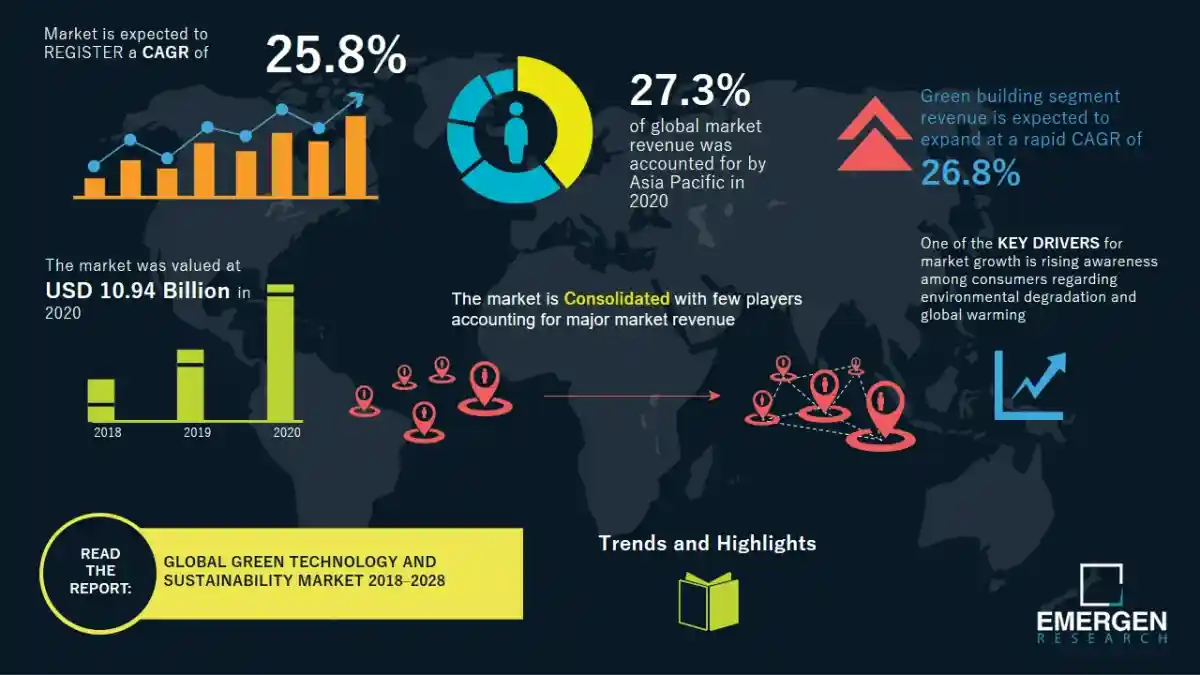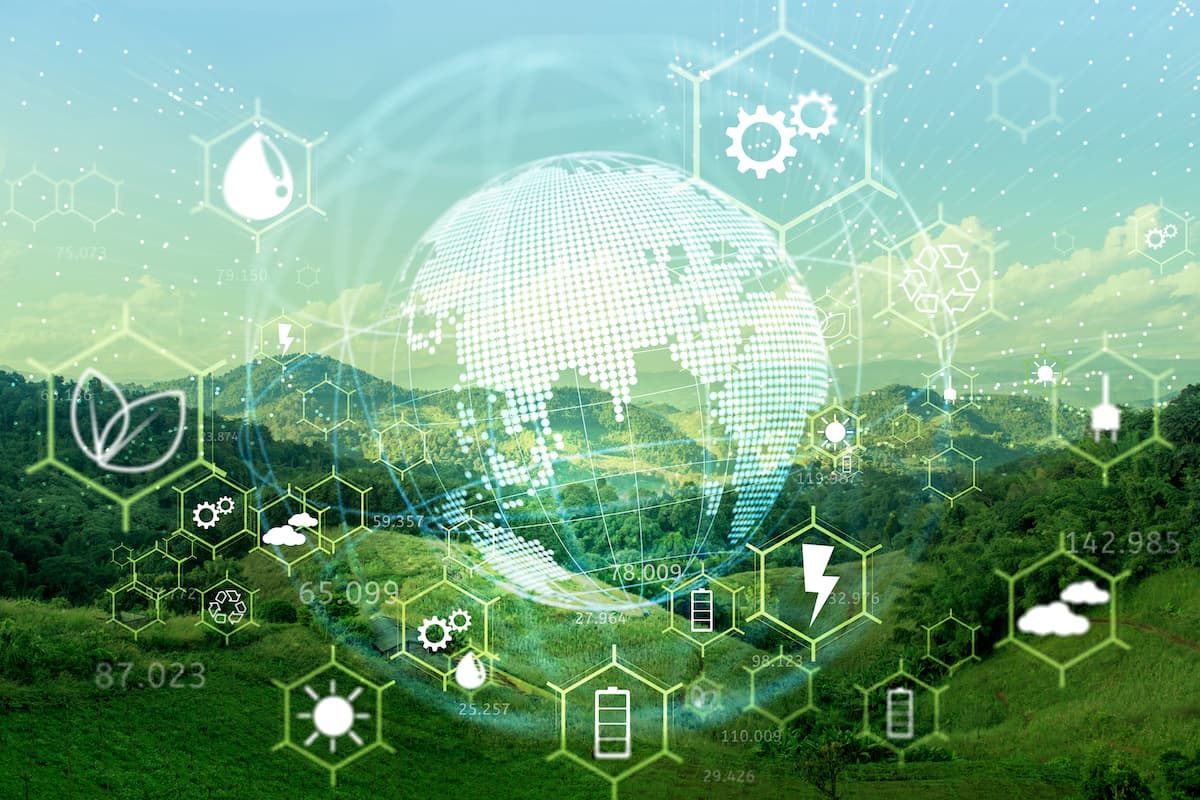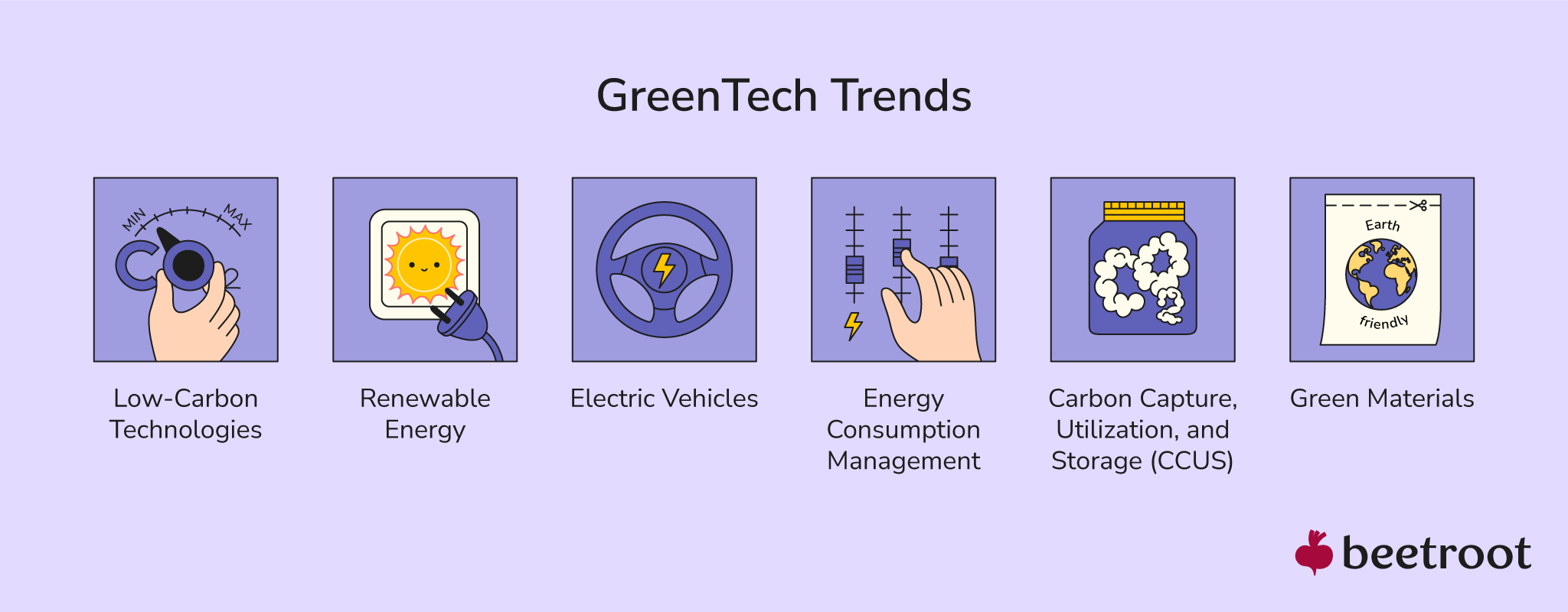Green Technology Trends: Innovations Shaping a Sustainable Future
Green technology is rapidly becoming a cornerstone of modern industries and our approach to sustainability. As the world faces environmental challenges, green tech is at the forefront, offering innovative solutions to reduce carbon footprints, conserve resources, and create a cleaner, more sustainable future. In this article, we will explore the top green technology trends and how they are reshaping industries and our daily lives.

1. The Rise of Renewable Energy Solutions
One of the most significant green technology trends is the continued growth of renewable energy sources such as solar, wind, and geothermal. As the world shifts away from fossil fuels, renewable energy is becoming more efficient and affordable.
-
Solar Power: Solar energy is one of the fastest-growing sectors in green technology. Advances in solar panel efficiency and energy storage solutions are making solar power more accessible to both businesses and consumers.
-
Wind Energy: Wind power is another renewable energy source that is gaining traction globally. Offshore wind farms, in particular, are becoming an important part of the energy mix.
-
Geothermal: Geothermal energy offers a reliable and sustainable energy source by harnessing the Earth’s internal heat. Innovations in geothermal technology are helping to expand its use in various regions.
The Future of Renewable Energy
As technological advancements continue to lower the costs of renewable energy, the world will see an increased reliance on these sources. Smart grids and energy storage systems will play a crucial role in stabilizing energy supply and demand, making renewable energy more reliable.
2. Electric Vehicles (EVs) and Battery Technology
Electric vehicles (EVs) are no longer a niche market; they are now a mainstream solution for reducing emissions from the transportation sector. As governments worldwide introduce stricter emissions regulations, the demand for electric vehicles continues to soar.
-
EV Adoption: The growing adoption of EVs is supported by innovations in battery technology, which have significantly improved driving ranges and charging speeds.
-
Charging Infrastructure: To make EVs more convenient, the development of widespread charging infrastructure is key. Fast-charging stations and home charging solutions are becoming more accessible.
-
Battery Recycling: As the number of EVs increases, so does the need for efficient battery recycling methods. Researchers are working on solutions to reuse and recycle lithium-ion batteries, reducing waste and environmental impact.

The Role of EVs in a Sustainable Future
Electric vehicles play a pivotal role in reducing air pollution and carbon emissions. As EV adoption accelerates and battery technology improves, they will become an integral part of the global effort to combat climate change.
3. Sustainable Agriculture and Food Production
Agriculture is one of the largest contributors to environmental degradation, but green technology is transforming this sector to make it more sustainable.
-
Vertical Farming: This innovative farming technique allows for food production in urban areas, using less water and land. Vertical farms can be located in warehouses and are highly efficient in using resources.
-
Precision Agriculture: By using drones, sensors, and data analytics, farmers can monitor crop health, water usage, and soil quality, leading to more sustainable and efficient farming practices.
-
Plant-Based Foods: The rise of plant-based diets is encouraging the development of new food technologies. Innovations in plant-based proteins, such as lab-grown meat, are reducing the environmental impact of food production.
Innovations in Sustainable Agriculture
The shift towards sustainable farming practices not only helps reduce environmental impact but also improves food security and promotes healthier living. As more sustainable solutions are adopted, the agricultural sector will play a crucial role in creating a greener future.
4. Green Building and Sustainable Architecture
The construction and real estate sectors are increasingly focusing on sustainable building practices to reduce energy consumption and create environmentally friendly spaces.
-
Energy-Efficient Buildings: The demand for energy-efficient homes and commercial buildings is growing. Smart buildings, equipped with energy-efficient lighting, heating, and cooling systems, reduce the carbon footprint of buildings.
-
Green Materials: The use of eco-friendly building materials, such as recycled steel, sustainable wood, and green concrete, is gaining popularity in construction projects.
-
Urban Green Spaces: Cities are incorporating more green spaces, such as parks, gardens, and green roofs, to improve air quality and reduce the urban heat island effect.

Sustainable Building Design for a Greener Future
Green architecture is a vital part of the sustainability movement. As urbanization continues, the need for energy-efficient buildings and green spaces will grow, transforming the way we live and work.
5. Water Conservation Technologies
Water scarcity is a growing issue worldwide, and green technology is helping address this challenge through innovative water conservation methods.
-
Smart Irrigation: Smart irrigation systems use sensors and data to optimize water usage in agriculture, reducing waste and improving crop yields.
-
Water Purification: New technologies for water purification, such as desalination and water recycling systems, are helping to provide clean water in areas with limited access.
-
Rainwater Harvesting: The collection and storage of rainwater for household and agricultural use is gaining traction as a sustainable solution for water conservation.
Future of Water Conservation
Innovative water management technologies are becoming essential in the fight against water scarcity. By improving water efficiency and ensuring the availability of clean water, these solutions will help safeguard this vital resource for future generations.
6. Circular Economy and Waste Management
The traditional linear economy—where products are made, used, and discarded—is being replaced by the circular economy model, where resources are reused and waste is minimized.
-
Waste-to-Energy: Technologies that convert waste into energy, such as biogas and waste incineration, are gaining popularity as sustainable waste management solutions.
-
Recycling Technologies: Advanced recycling methods, including plastic recycling and e-waste recycling, are improving the efficiency of waste processing and reducing landfill waste.
-
Upcycling: The trend of upcycling—repurposing materials and products to create something new—has become a key focus in the circular economy.

Embracing the Circular Economy
By adopting circular economy principles, industries can significantly reduce waste, conserve resources, and create a more sustainable economic model. As green technologies continue to evolve, we will see even more innovative solutions that promote waste reduction and resource efficiency.
7. The Future of Green Tech
As the demand for sustainable solutions increases, green technologies will continue to evolve and expand into new industries. The global green tech market is expected to grow significantly, driven by the need for innovative solutions to environmental challenges.
-
AI in Green Tech: Artificial intelligence (AI) will play a crucial role in optimizing energy use, improving waste management, and enhancing sustainability across industries.
-
Blockchain for Sustainability: Blockchain technology can help track the sustainability of products throughout their lifecycle, ensuring that companies meet environmental standards.
Green Technology’s Role in Global Sustainability
Green technology is not just a trend but a vital part of the global effort to tackle climate change and protect the planet. As innovation accelerates, we can expect a future where green tech is deeply integrated into every aspect of our lives.
8. FAQ: Green Technology and Sustainability
What is green technology?
Green technology refers to innovations designed to reduce the negative environmental impact of human activity. This includes renewable energy, energy-efficient devices, sustainable agriculture, and waste reduction technologies.
How can green technology help reduce carbon emissions?
Green technologies, such as renewable energy, electric vehicles, and energy-efficient buildings, directly reduce the carbon emissions associated with traditional energy production, transportation, and construction.
What are some examples of green technology in daily life?
Examples of green technology in daily life include solar-powered devices, electric cars, smart thermostats, and recycled materials used in products and packaging.
Why is the circular economy important?
The circular economy minimizes waste by keeping products and materials in use for as long as possible. It reduces the need for new resources, lowers emissions, and promotes sustainability by reusing and recycling materials.
9. Conclusion
Green technology trends are paving the way for a more sustainable and eco-friendly future. From renewable energy to electric vehicles and smart agriculture, green tech offers innovative solutions to some of the world’s most pressing environmental challenges. As technology continues to evolve, the adoption of green solutions will be crucial for combatting climate change and ensuring a sustainable planet for future generations.
For more insights into sustainable technology innovations, visit our Green Tech Insights page.


